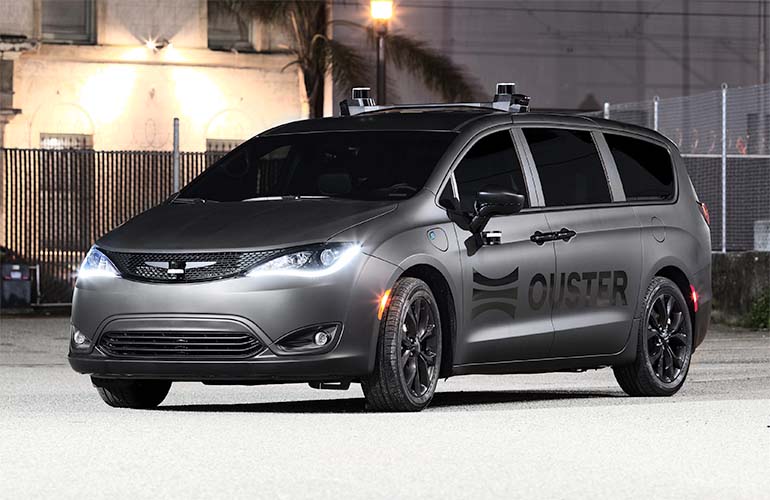|
Listen to this article  |

The Ouster Automotive group will bring the best of Ouster and Sense Photonics together to deliver LiDAR sensors optimized for automotive applications. | Photo credit: Ouster
A monumental shift in the LiDAR market happened today as Ouster Inc (OUST.N) announced that it is buying privately held Sense Photonics. After the acquisition, Sense Photonics will become the “Ouster Automotive” division of Ouster. The new group will be under the direction of Sense Photonics CEO Shauna McIntyre and will focus entirely on solid-state LiDAR sensing products for the automotive market.
LiDAR sensors are key to safe and effective operation of autonomous vehicles. The primary concern with LiDAR sensors is that until the advent of solid-state sensors, LiDAR was too expensive for everyday consumer applications (as in automotive). Ouster’s vision is to deliver a five-unit LiDAR sensing package for $1000, whereas a single LiDAR unit currently sells for $2000+.
Both companies have innovated and invested in developing VCSEL and SPAD-based digital LiDAR sensors. The first product to market will be a 200-meter, solid-state LiDAR sensor, however, the road map outlined by the company states that it plans to develop a portfolio of short, medium and long range devices for L2+ autonomy. The company also plans to accelerate its solid-state LiDAR roadmap by 12+ months.
Sense brings with it several flagship strategic development agreements awarded by a major global automotive OEM earlier this year. In addition, there are five series production programs collectively worth over $1 billion in potential revenue, currently under negotiation with automotive OEMs for start of production in 2025-2026.
Impact to the AMR market
Autonomous mobile robots (AMRs) use LiDAR sensors for obstacle detection, localization and navigation. AMRs need either 3D cameras or LiDAR for primary sensing of the world around the vehicle.
AMR manufacturers have the same concerns as the automotive market in the cost of LiDAR sensors, albeit at much lower volumes. As a result, the AMR market has been following the development of solid-state LiDAR sensors in the automotive market in the hope of benefiting from lower cost sensors. The needs of the two markets are different, in that automobiles travel much faster than AMRs, while AMRs often need more resolution from a sensor in order to navigate with higher precision.
This deal will be a good thing for AMR manufacturers if the newly minted Ouster Automotive group is able to accelerate and commercialize a portfolio of solid-state LiDAR devices at a lower cost point.
Details of the deal
Credit: Source link


Comments are closed.